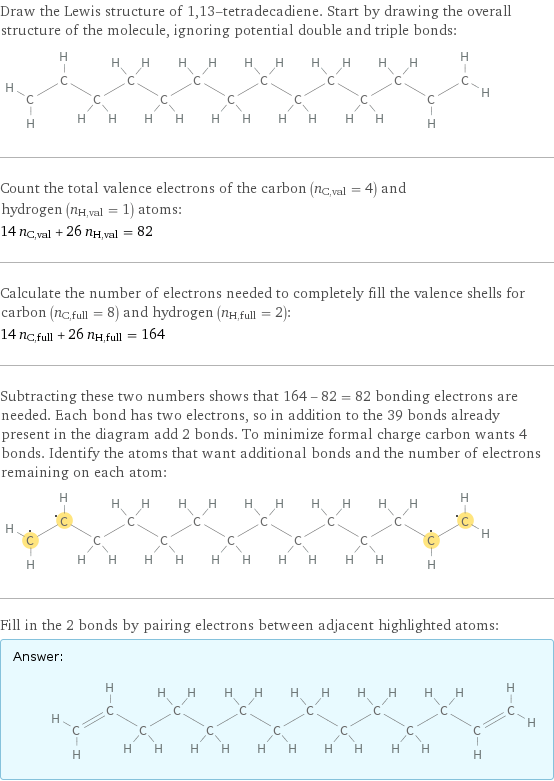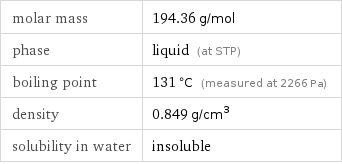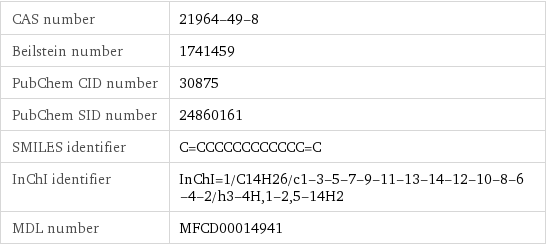Input interpretation

1, 13-tetradecadiene
Chemical names and formulas

formula | CH_2=CH(CH_2)_10CH=CH_2 Hill formula | C_14H_26 name | 1, 13-tetradecadiene IUPAC name | tetradeca-1, 13-diene alternate names | tetradeca-1, 13-diene | tetradecadiene-1, 13 mass fractions | C (carbon) 86.5% | H (hydrogen) 13.5%
Lewis structure

Draw the Lewis structure of 1, 13-tetradecadiene. Start by drawing the overall structure of the molecule, ignoring potential double and triple bonds: Count the total valence electrons of the carbon (n_C, val = 4) and hydrogen (n_H, val = 1) atoms: 14 n_C, val + 26 n_H, val = 82 Calculate the number of electrons needed to completely fill the valence shells for carbon (n_C, full = 8) and hydrogen (n_H, full = 2): 14 n_C, full + 26 n_H, full = 164 Subtracting these two numbers shows that 164 - 82 = 82 bonding electrons are needed. Each bond has two electrons, so in addition to the 39 bonds already present in the diagram add 2 bonds. To minimize formal charge carbon wants 4 bonds. Identify the atoms that want additional bonds and the number of electrons remaining on each atom: Fill in the 2 bonds by pairing electrons between adjacent highlighted atoms: Answer: | |
3D structure

3D structure
Basic properties

molar mass | 194.36 g/mol phase | liquid (at STP) boiling point | 131 °C (measured at 2266 Pa) density | 0.849 g/cm^3 solubility in water | insoluble
Units

Liquid properties (at STP)

density | 0.849 g/cm^3 refractive index | 1.443
Units

Chemical identifiers

CAS number | 21964-49-8 Beilstein number | 1741459 PubChem CID number | 30875 PubChem SID number | 24860161 SMILES identifier | C=CCCCCCCCCCCC=C InChI identifier | InChI=1/C14H26/c1-3-5-7-9-11-13-14-12-10-8-6-4-2/h3-4H, 1-2, 5-14H2 MDL number | MFCD00014941
Safety properties

flash point | 103.9 °C

DOT hazard class | 3 DOT numbers | 3295